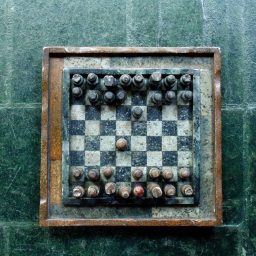It is difficult to change an established and chosen path. Transforming and creating sustainable change within an organization raises difficult questions. How can we change our current path? How can a huge organization like ours transform its ways of working and producing?
Basically, every company in the automotive and transport industry is dealing with these questions in these days. To accelerate the transformation process in the industry, many major market players have set up transformation units within or alongside the corporate structure.
This article takes a look into one of these units: tb.lx, a digital product studio, established by Daimler Truck, and discusses how to deal with the tensions between an innovation unit and its “mothership”.
What makes a good partnership?
Personally, I would say it boils down to trust, commitment, and shared values. Someone you trust and can count on is reliable. Someone who is committed completes a task and invests an agreed amount of resources to achieve common goals. Someone who shares the same values with you is more likely to share the same purpose and future (or vision) of that agreed partnership. This applies not only to personal partnerships but also to business ones. In every partnership, two (or more) partners meet with unique expectations and motivations, and in business partnerships, it can be even more important to understand these and know how to deal with them.
The partnership between tb.lx and Daimler Truck
The partnership we are looking at in this article is the one between tb.lx and Daimler Truck AG. Tb.lx develops digital solutions for sustainable transportation and has more than 100 employees today. Our internal structures continue to evolve, we develop remarkable expertise in areas such as marketing, digital product development and engineering or program management. We are on track to launch various digital products in different regional markets. This is where we are now, and we keep on growing. Getting there was a four-year journey that took us out of the jungle and over the dirt road, and now we see the highway ahead of us.
As a company founded by Daimler Truck AG – one of the world’s leading and largest manufacturers of commercial vehicles – we were able to benefit from a rich heritage. But finding and shaping our own corporate DNA, our structures, and our way of doing things is a constant balancing act. To grow and mature as a company, we had to create new structures and roles. Whereas we used to make decisions more spontaneously and in small circles, we now have to think about the principles by which we give orders and make decisions. It is crucial to maintain a good connection between the individual functions and the product and to promote (and protect) our informal productivity.
When finding the answers to our problems, our way of looking at the world and how good decisions manifest can diverge from the perspective of “the mothership”, our partner. These potentially divergent motivations and expectations can also be referred to as “local rationalities”. Local rationalities develop automatically within an organization as work is divided. Although this is perhaps more obvious when talking about different functions, e.g. sales, finance, research, and development, this also applies to the relationship between organizations. As local rationalities diverge, this leads to tensions. Not all tensions are bad, but care must be taken to distinguish between productive (or creative) and destructive tensions.
Creative tensions between two partners
The term “creative tension” was coined by author Peter Senge in his 1990 book, The Fifth Discipline. Senge mentions creative tension as the “gap between vision and current reality” – or the space between reality and desired outcomes. Senge further describes that this gap is a source of energy, too. “If there was no gap, there would be no need to act to move towards the vision,” he adds. Creative tension operates on the boundary between uncertainty and direction. Senge argues that maintaining a certain level of creative tension in teams and organizations provides an impetus to resolve this uncertainty. This, in turn, creates opportunities to develop new ideas and drive innovation. [1]
In our example, Daimler Truck AG has a century-long history of developing, manufacturing, and selling commercial vehicles. It has built up enormous expertise, established and continuously improved (production) processes, and has become a global leader in the industry – known for high-quality products. On the other hand, tb.lx is a young, hybrid (remote-first) company that has its roots in software development and is ambitious to hit the market fast with state-of-the-art software solutions, not afraid to fail and co-creating with the customer. Sounds like two worlds colliding? It certainly creates tension. Therefore, it needs constant observation, and awareness to keep only the productive ones.
We have a list of questions we use to distinguish between destructive and productive tensions:
- Which tensions are essential to be successful?
- Which tensions help us to advance creative and innovative solutions?
- Do the existing tensions drive focus (and potentially speed up business/decision-making)?
- Which division of labor, and hence local rationalities, do we need to design the tensions we want?
Example: The tensions around ready-to-market products
Let’s take the example of bringing products to market quickly, failing, and learning from mistakes, as part of an agile product development process. While this has become standard in software development, it doesn’t smoothly mesh with the complex vehicle/hardware development process, which is structured by multiple budgeting rounds, quality gates, and decision-making committees. While tb.lx fears missing business opportunities by not coming to market early with MVP versions of a product, Daimler Truck needs to guarantee that the products it launches are safe and reliable – both for safety and brand reputation reasons.
Creating structures to maintain a productive partnership
One measure to deal with these different local rationalities is routines that force both sides to share their views. You keep each other informed of and educated about the methods and processes being used, e.g. using a digital product development process and the internal vehicle development process. This can be done by mutual sharing sessions and including representatives from both parties to existing decision-making rounds if appropriate.
The creation of new roles can also help to maintain a productive partnership. For example, new roles – such as Program Management, and Engineering Manager – were created at tb.lx to support continuous and coherent communication between the corporate and the digital product studio (smaller and less established unit). Finding ambassadors within the corporate who share and drive the vision of transforming towards a software-driven company has also been a critical factor. An ambassador helps to represent and advocate for the way of approaching problems and business and acts as an embodiment of tb.lx, the start-up, even when not present.
Where a smaller, and less established unit meets a corporate, it is important to recognize both the local rationalities and the resulting (productive) tensions to achieve successful collaboration and partnership and ensure the survival and success of both organizations in the long term. Thus, we do not lose energy from experiencing the tensions – but gain even more.
[1] Senge, P.M., 1997. The fifth discipline. Measuring Business Excellence.





